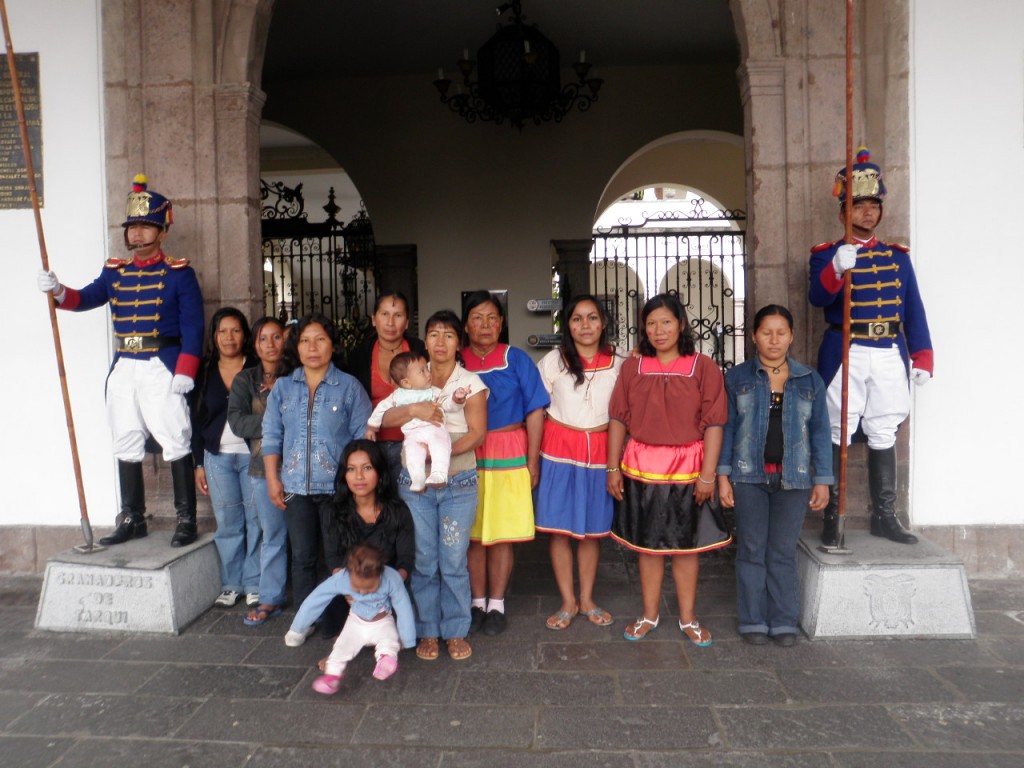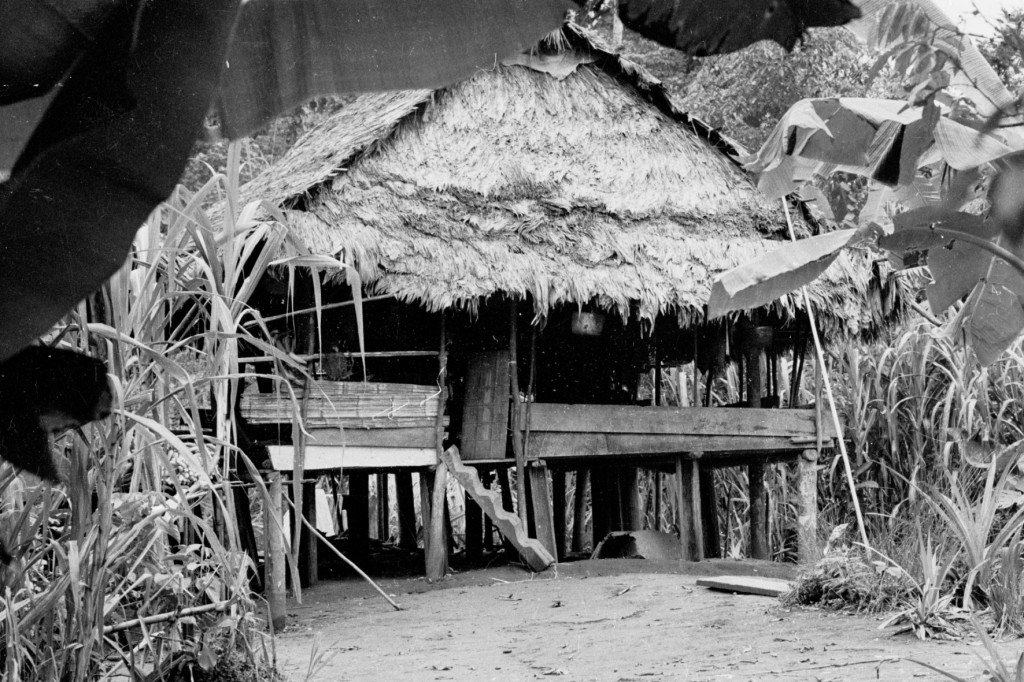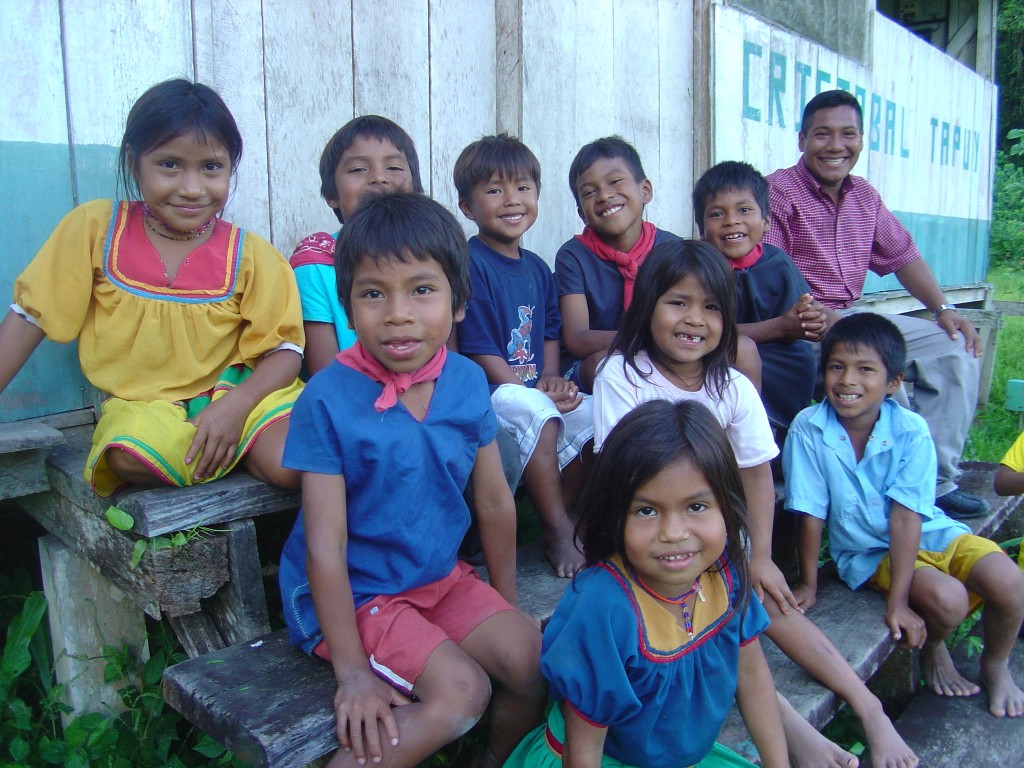Cofan rangers analyze a water sample at the Gueppi ranger station in the Cuyabeno Wildlife Reserve in the Ecuadorian Amazon. / Guardaparques cofanes analizan una muestra de agua en la estación Gueppi en la Reserva Cuyabeno.
Northeastern Ecuador’s forests have some of the world’s highest species counts for plants and animals, are at the heart of the tropical Andes “hotspot” zone and are instrumental in Ecuador’s status as a mega-diverse country. However, their conservation presents a major challenge. Mining, petroleum exploitation, lumber extraction, mega-infrastructure projects and colonization are major threats, and even within national parks, agricultural expansion continues with little control.
A notable exception is forest within Cofan ancestral territory (CAT). CAT covers about 430,000 hectares (1 million acres) of some of the richest, best-conserved forests in Ecuador ranging from Andean highlands to cloud forest to tropical rainforest.
As a first line of defense, FSC trained and fielded a professional, effective force of Cofan rangers in 2003. This group, 60 members at full capacity, carry out on-the-ground protection and management of Cofan lands to ensure territorial security and zero deforestation. The Cofan Ranger Program (CRP) has trained over 100 Cofan men and women in the protection and management of Cofan territories, as well as people from other indigenous and non-indigenous groups.
ESPAÑOL
Los bosques del noreste del Ecuador tienen algunas de las cifras más altas del mundo de especies de plantas y animales, están en el corazón del "hotspot" andino tropical y son escenciales para la designación de "país mega-diverso" para Ecuador. Sin embargo, su conservación es un gran reto. La minería, explotación petrolera, extracción de madera, proyectos de mega-infraestructura y colonización son amenazas importantes, y incluso dentro de las reservas nacionales, la expansión agrícola sigue con poco control.
Una excepción importante es el bosque dentro del territorio ancestral cofán (TAC). TAC cubre alrededor de 430.000 hectáreas de bosques bien conservados y muy biodiversos en Ecuador, desde páramos andinos hasta bosque nublado y bosque tropical.
Como una defensa para este territorio, FSC entrenó y un grupo de guardaparques cofanes profesionales y eficaces en el 2003. Este grupo, 60 miembros en total, realizan la protección y manejo de tierras cofanes para asegurar seguridad territorial y cero deforestación. El Programa de Guardaparques Cofanes ha entrenado más de 100 hombres y mujeres cofanes en la protección y manejo de territorio cofán, además de personas de otras comunidades indígenas y no-indígenas.








